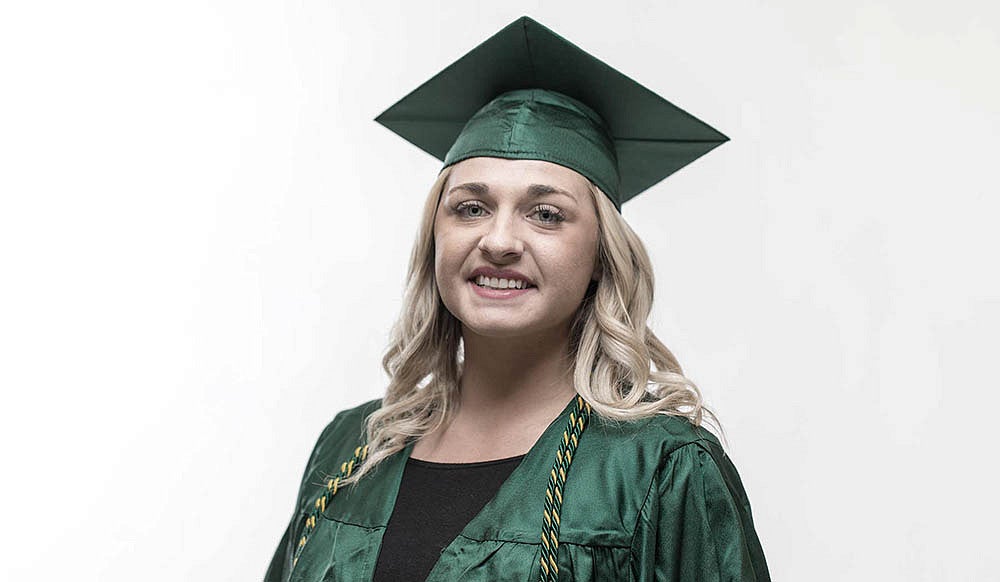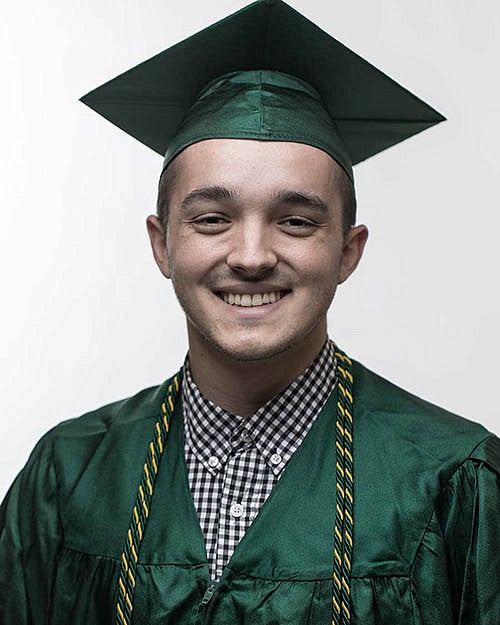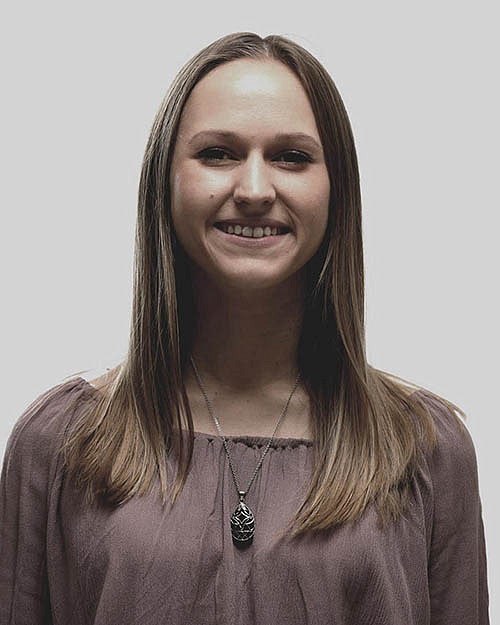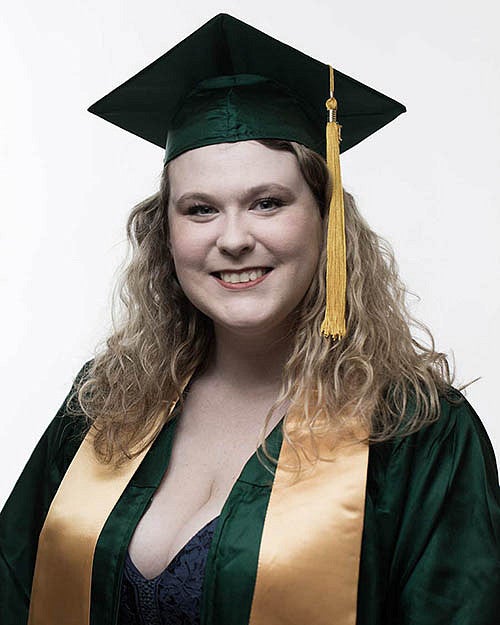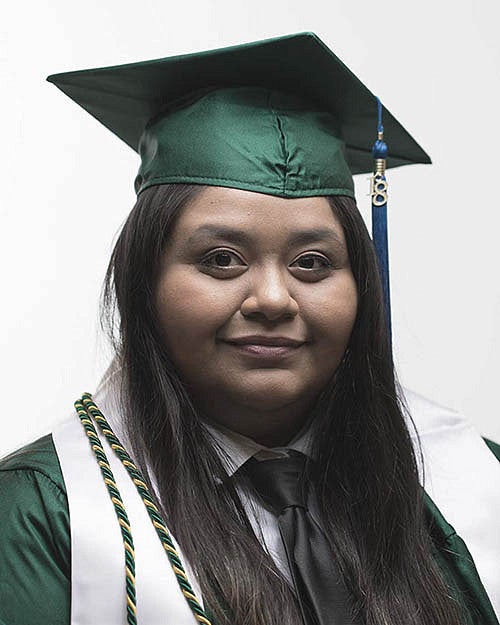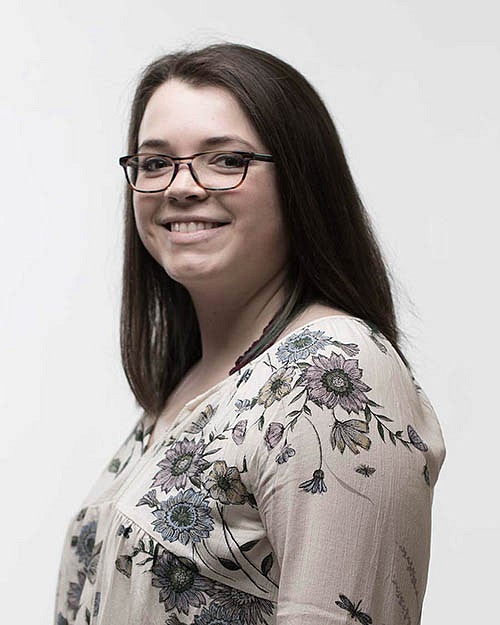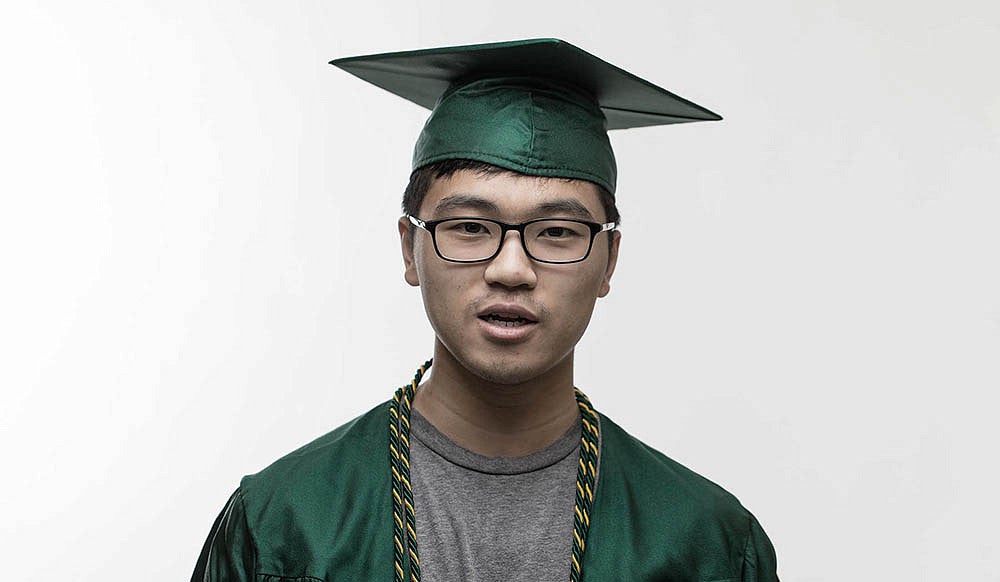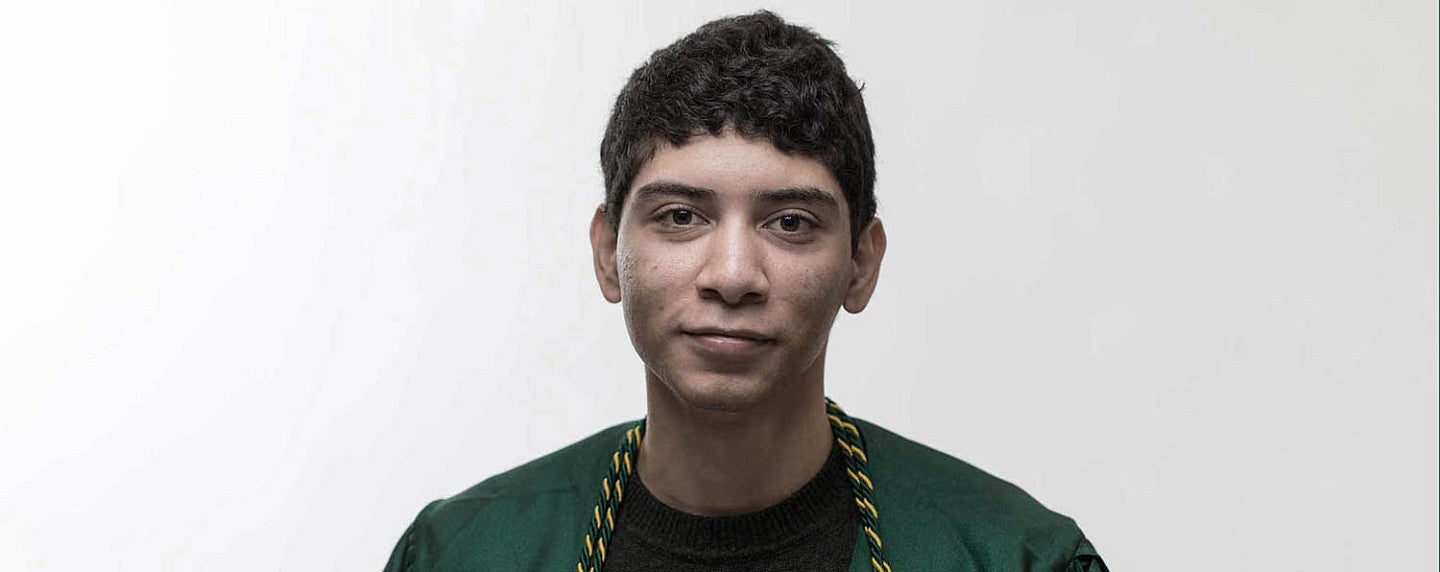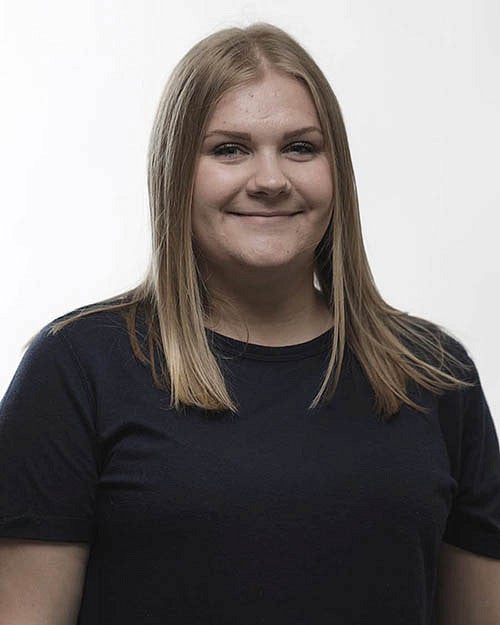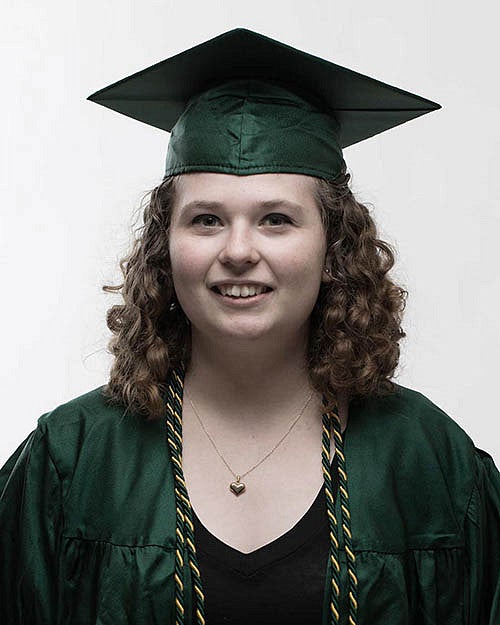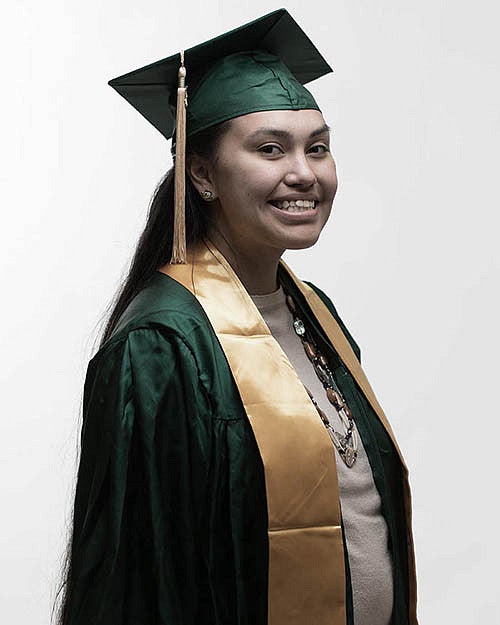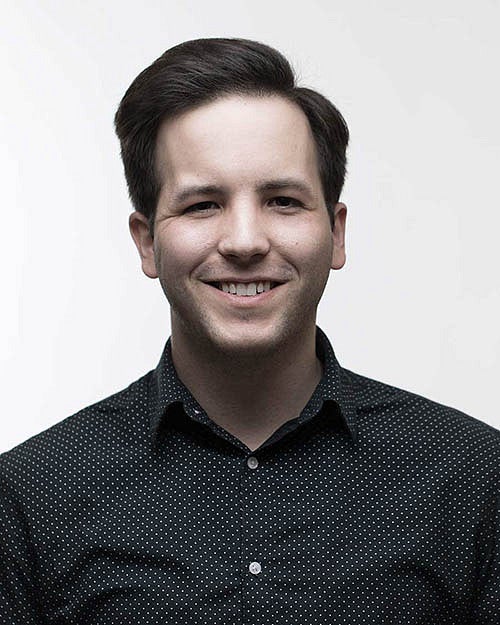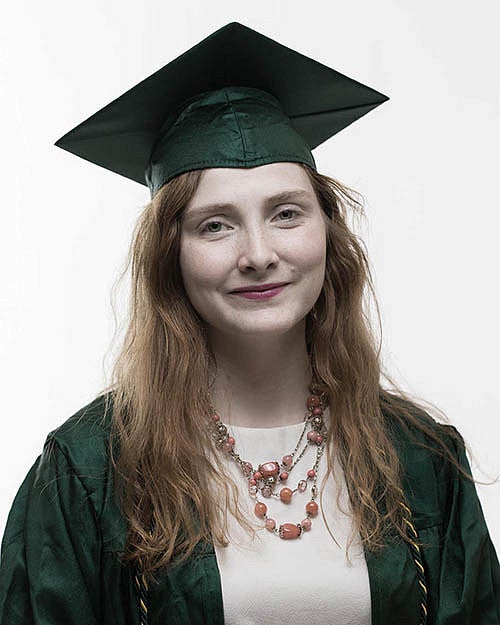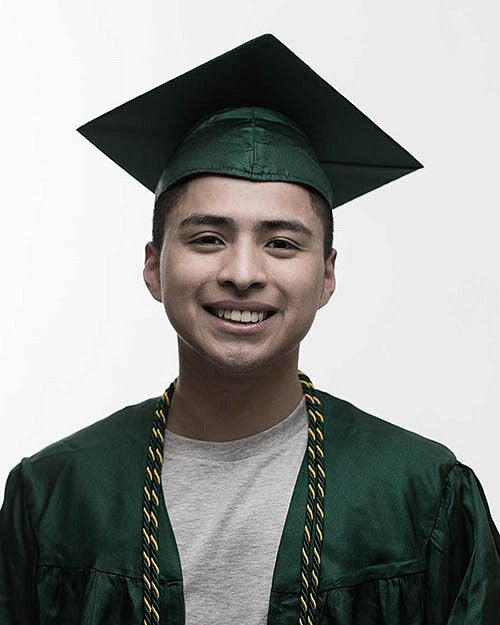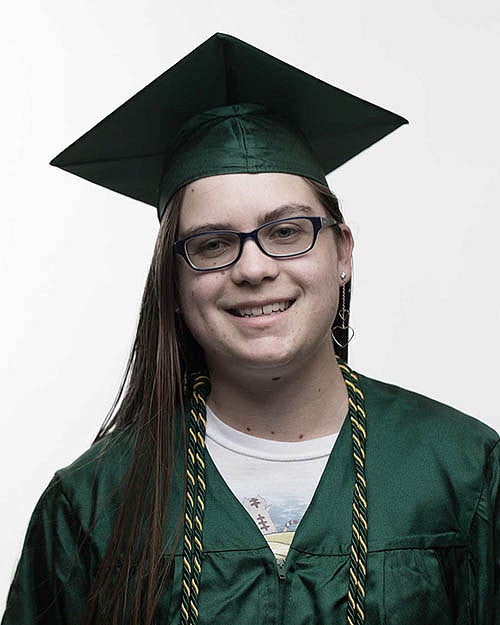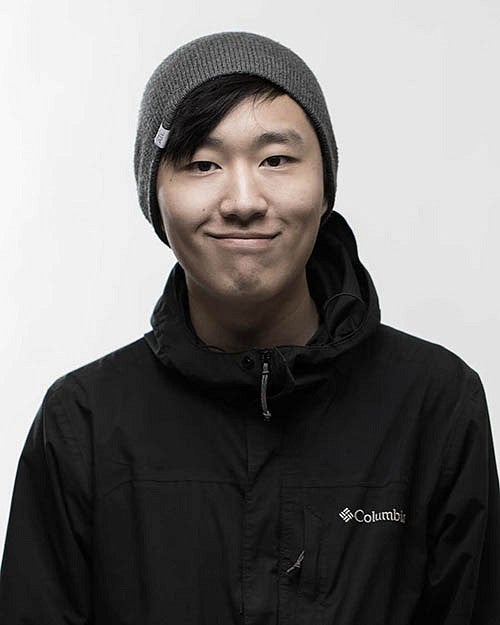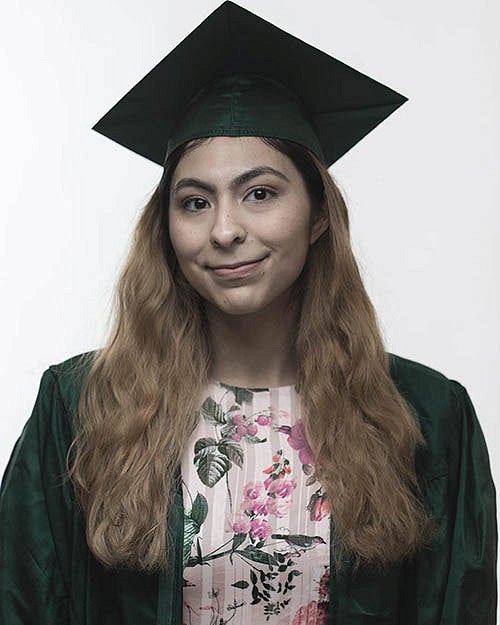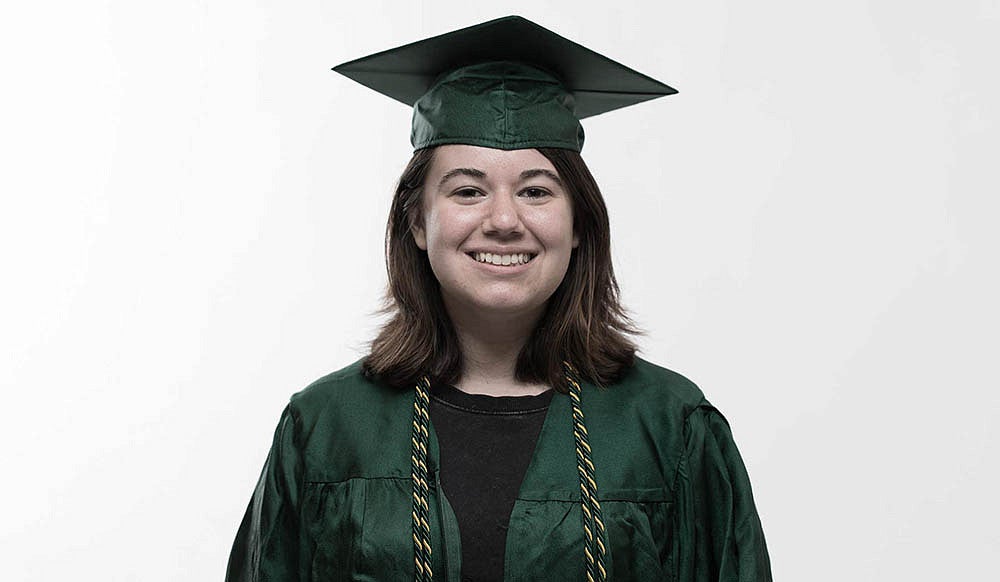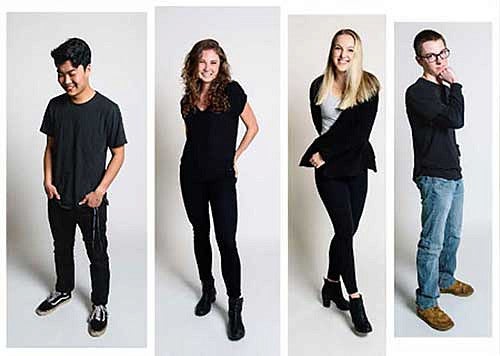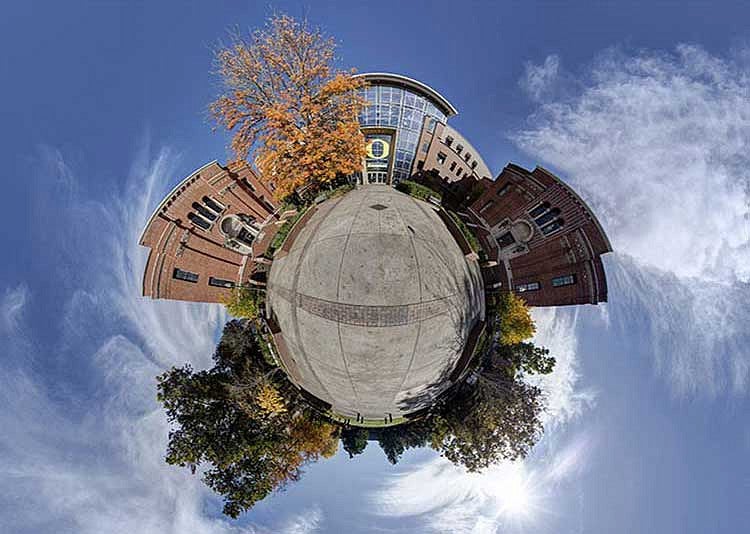PathwayOregon, a scholarship program for Oregonians who are low income, celebrates 10 years and thousands of lives transformed
PathwayOregon covers tuition and fees, provides comprehensive academic support, and removes barriers to success in college. This innovative and unconventional scholarship program was among the first of its kind at a public institution in the United States—and was the first one in the state of Oregon.
Highlights:
PathwayOregon by the Numbers
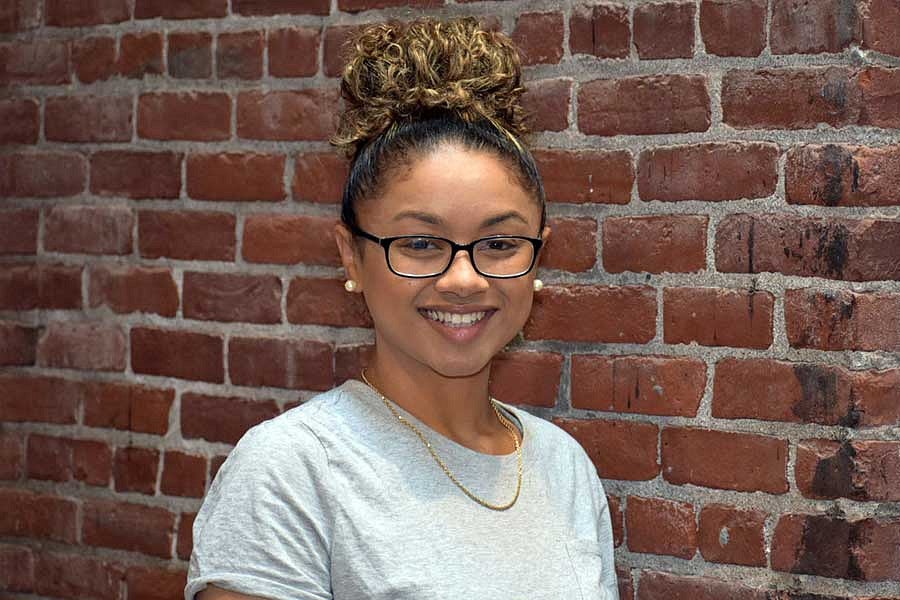
—Brianna Hayes, Class of 2018
Portland, Oregon
“I'm Going to College”
Sometimes, life takes a hairpin turn for the better. Reality seems too good to be real. But then it sinks in, and you have a new story to tell—the one about that time when everything changed for the better.
For 2018 graduate Brianna Hayes, her story begins at a restaurant with her dad. The first-generation college student from Portland had been active at Grant High School, earned a solid GPA, and been accepted to the UO. But she had no idea how to afford college, and she was feeling down. Then her mom called.
“You just got a piece of mail from something called PathwayOregon,” she told Brianna. “Your tuition and fees are paid for.”
“I’m just sitting there screaming in the middle of the restaurant, and then I started crying,” says Brianna. “My dad asked ‘What is wrong with you? What’s going on?’ I said ‘I’m going to college. It’s going to work out.’
“It was great. The best moment of my life.”
For the past 10 years, high school seniors from across Oregon have been getting the PathwayOregon promise—and a lifelong story to tell. It all begins with a letter from the University of Oregon. Congratulations, now get to work. Because your college degree (and everything that happens after you earn it) just went from virtually impossible to totally achievable.
What does PathwayOregon cover?
Tuition, fees, advising, and support at the University of Oregon, through a combination of federal, state, and university funds.
PathwayOregon awards are renewed annually for up to 12 terms of undergraduate study over five years (excluding summer terms).
What are the requirements?
- Oregon resident
- Graduated from Oregon high school in the last two years
- Minimum 3.40 cumulative high school GPA on a 4.00 scale*
- Admitted to the UO as a first-time freshman
- Eligible for Federal Pell Grant as determined by the FAFSA
* Students who earn less than a 3.40 high school GPA but meet all other program eligibility criteria will be considered for the program on a space and funding available basis
How do I become a PathwayOregon scholar?
There is no specific PathwayOregon application. To become a PathwayOregon scholar, you must:
The Help You Need
How many credits should I take? Where do I buy my books? What major should I choose?
It’s a universal challenge among first-generation college students who can’t call home and ask for help with the essentials of college life.
These are exactly the types of obstacles that the UO faculty and staff anticipated when it started its ambitious, inventive plans for PathwayOregon. Advisers are there to help, starting with summer orientation programs before students begin their first term of college.
“I remember that I really had no idea where to start, what questions to ask, or who to go to,” says Case-Scott. “And I remember I got an email reminder one day from PathwayOregon saying schedule your advising appointment, you need to meet with a PathwayOregon advisor right now.”
She found the help she needed—and a community of students who could relate to her experience as a first-generation college student. Later, she paid it forward by working as a peer adviser helping students face the same challenges she had overcome.
—Wesley Bryant, Class of 2018
La Pine, Oregon
A Path to a Degree
-
SENIOR YEAR OF HIGH SCHOOL
Apply to UO
Submit Free Application for Federal Student Aid (FAFSA)
Receive PathwayOregon acceptance letter
-
FIRST YEAR
Meetups with fellow PathwayOregon students
Summer
Attend IntroDUCKion on campus, participate in PathwayOregon orientation session
fall
Meet with PathwayOregon advisor, pair with peer mentor
WINTER
Meet with PathwayOregon or major advisor
SPRING
Meet with PathwayOregon or major advisor
-
SECOND YEAR
Winter
Meet with PathwayOregon advisor
SPRING
Declare or confirm major
-
THIRD YEAR
Take part in experiential learning program, study abroad, internship
Winter
Meet with major department advisor to complete graduation plan
-
FOURTH YEAR
Career counseling with advisor, receive help on preparing for GRE, etc.
FALL
Meet with major department advisor to confirm remaining major requirements
SPRING
Consider opportunities to become mentors to incoming PathwayOregon scholars
Graduation, PathwayOregon recipients receive special cord signifying their scholarship to wear at graduation; attend culminating event at Ford Alumni Center with fellow PathwayOregon scholars
Opening the UO to More Oregonians
Over the past 10 years, the UO has sent more than 5,000 life-changing, door-opening PathwayOregon letters—to cities and small towns; to the coast, the valley, and the high desert; to any Oregonian who applies to the UO and meets the requirements.
The funding gives them access, but PathwayOregon is one of relatively few programs nationwide that also provides the resources and academic support to help students succeed once they’re here.
For Haley Case-Scott, a first-generation college student from Chiloquin, Oregon, this extra support was crucial. She graduated in 2018 with a bachelor’s degree in political science and a Native American Studies minor.
“There is a lot of pressure that comes from the expectation that I was supposed to do this on my own,” says Case-Scott. Her parents were very supportive, but they couldn’t offer the voice of experience.
“They really didn’t know what to say to me, what resources to provide me, or what advice really to give me,” she says.
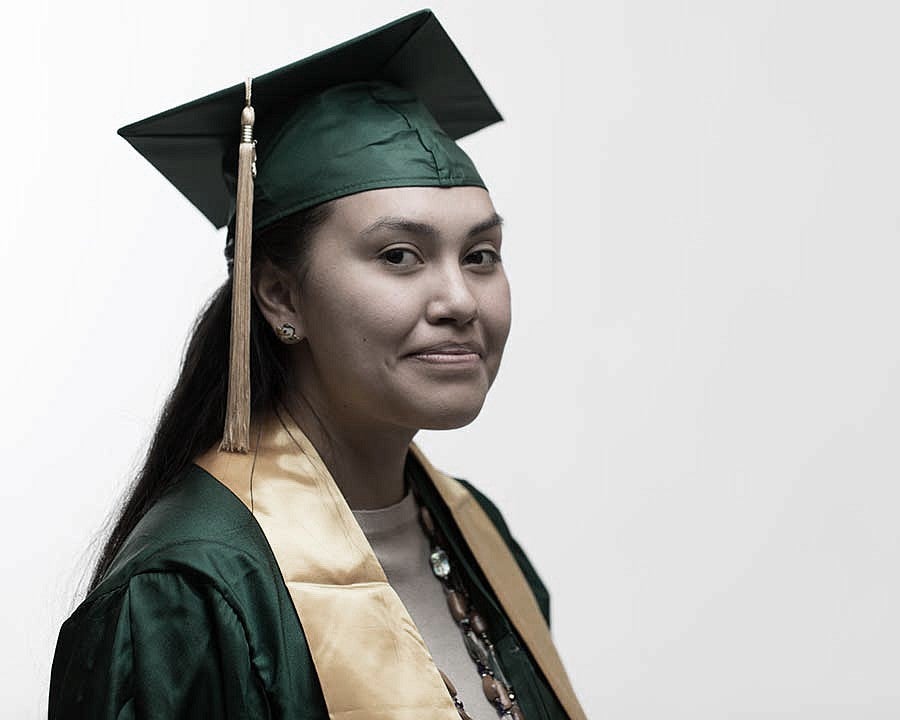
—Haley Case-Scott, Class of 2018
Chiloquin, Oregon
Helping Oregonians who are Low Income Succeed
Years before the first PathwayOregon freshmen arrived on campus, the UO administration approached faculty and staff members with a simple—but challenging—question: How can the state’s flagship university remove financial barriers to college for Oregonians who are low income and help them succeed once they’re here?
It wasn’t exactly John F. Kennedy’s “We choose to go to the moon” speech. But it was ambitious and audacious. And measuring success—or failure—was just as tangible. If PathwayOregon scholars earned their degrees at higher and faster rates than Pell-eligible students nationwide, then we all win (news flash: we won).
Faculty and staff members from across the university collaborated to find the funding, decide what resources would serve students best, and piece together the resources they needed to deliver on the UO’s bold promise to Oregon.
Making College Affordable for More Oregonians
Rural students. Students of color. Students who are the first in their families to attend college. Oregon students who will thrive at a Tier One research university with an innovative program of financial, academic, and social support. PathwayOregon students.
First-Generation Students
Image
Students of Color
Image
Rural Students
Image
Image
Image
Not Your Typical Scholarship
PathwayOregon leverages the federal Pell Grant
Although the funding varies for each student, the promise is the same for every PathwayOregon scholar. The university guarantees that tuition and fees will be covered for 12 terms, as long as the students meet benchmarks on the path to success and remain Pell grant eligible.
This variable funding model encourages students to continue applying for scholarships and grants, enabling the UO to leverage external resources. It also simplifies what is often a complex financial puzzle, freeing students to focus on their studies, instead of all the different sources of funding for school. They simply know they’re covered.
That means students can concentrate on school and graduate with less debt. For many, it makes it possible to study abroad, participate in internships or student leadership activities, and explore ways to match their education and interests with a future career.
Wesley Bryant, a 2018 graduate from La Pine, Oregon, is now a paramedic in Roseburg. He recently bought his first house. Now that he’s “just” working full time—instead of working and being a UO student—Bryant hopes to spend more time flying Cessna 172 airplanes. College wasn’t easy, he says, but he credits UO faculty and staff members for helping him on the path to a degree.
“It’s with the support of all the people I had here,” says Bryant, who worked as a paramedic and fire fighter as an undergraduate. “Those were the backbones of my success. They encouraged me every step of the way. It’s a lot of hard work. Getting a bachelor’s is a lot of credits, a lot of time, a lot of essays. It’s just not easy.”
And now that he’s done, what does a bachelor’s degree symbolize? “To me, it’s a sense of accomplishment,” he says. “It’s a moment of self-realization where you go ‘I can’t believe I did that.’”

—Bryan Calzadilla, Class of 2018
Portland, Oregon
Investing in Success
PathwayOregon is funded by UO donors, the Oregon state government, and millions of dollars allocated by the university through the Office of Student Financial Aid and Scholarships. In 2015, Connie, BS ’84, and Steve Ballmer made the largest scholarship contribution in UO history to the program, enabling the UO to welcome an additional 200 PathwayOregon students to campus that fall.
Donors have continued to support the program with gifts of all sizes. During the 2017-18 fiscal year, more than 400 donors contributed a total of more than $2 million to PathwayOregon.
A loyal contributor to PathwayOregon since it began in 2008, Oregon Community Credit Union (OCCU) recently increased its longstanding support by helping the program expand its peer mentorship efforts. OCCU’s gift resulted in 583 incoming students being paired with a mentor, allowing more students than ever before to benefit from mentorship support.
The program helps the UO leverage Federal Pell Grant funding, combining these resources to make the most of each. These investments in Oregonians are paying off. By any measure, the first decade of PathwayOregon has been a tremendous success.
PathwayOregon scholars demonstrate higher graduation rates than their peers. They also finish on time at comparatively high rates.
This doesn’t happen by accident (or with financial support alone). Covering tuition and fees provides access, but cultivating success requires dedicated people and comprehensive programs to help students reach their full potential.
UO faculty and staff members designed PathwayOregon specifically to address the barriers to success that are most common for these students. And they made it flexible and personal enough to help with the unique challenges each student faces.
From the moment they set foot on campus until the day they receive their diplomas, PathwayOregon scholars get the guidance they need to meet academic requirements, manage their finances, link their majors to future careers, and more.
If it sounds like common sense, it is. But this level of support is uncommon. It requires coordination, collaboration, and a relentless focus on the end game—earning that degree on time, with a career in mind.
Give to Oregon’s Future
Your gift to PathwayOregon helps make college a reality for Oregonians


